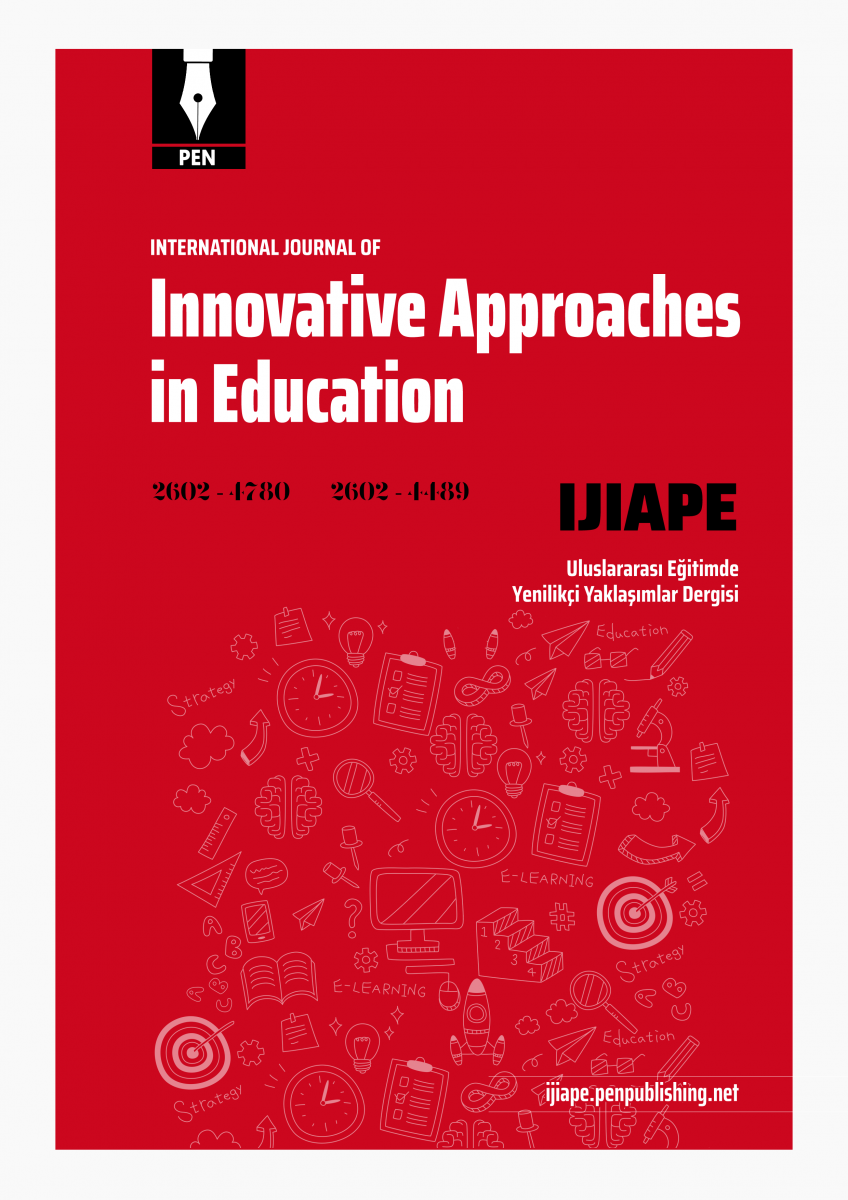- Akın Sarı, B. (2018). Temperament features and it's impacts on development. Child Psychiatry-Special Topics, 4(1), 5-9. [Google Scholar]
- Akoğlu, G. & Karaaslan, T. B. (2020). Possible psychosocial effects of the COVID-19 and isolation process on children. İzmir Katip Çelebi University Faculty of Health Science Journal, 5(2), 99-103. [Google Scholar]
- Aksu, S. (2021). Semiotic analysis of children's paintings on Corona outbreak. SED - Journal of Art Education, 9(1), 51-61. https://doi.org/10.7816/sed-09-01-06 [Google Scholar] [Crossref]
- Aktan Acar, E., Erbaş, Y. H. & Eryaman, M. Y. (2021). An examination of preschool teachers' opinions towards the Covid-19 pandemic process. Online Journal of Distance Learning Administration, 7(4), 31-54. https://doi.org/10.51948/auad.979726 [Google Scholar] [Crossref]
- Aras Kemer, F. N. (2022). Evaluation of children's anxiety during the pandemic based on their drawings. Turkish Psychological Counseling and Guidance Journal, 12(65), 320-342. https://doi.org/10.17066/tpdrd.1138538 [Google Scholar] [Crossref]
- Artut, K. (2004). An investigation on children’s development level of drawing during pre-school illustration education. Journal of Çukurova University Institute of Social Sciences, 13(1), 223-234. [Google Scholar]
- Cresswell, J. W. & Clark, V. P. (2007). Designing and conducting mixed methods research. Thousand Oaks CA: Sage. [Google Scholar]
- Çankırılı, A. (2015). Pictures language. İstanbul: Zafer Publishing. [Google Scholar]
- Dilci, T. (2017). Problems and solutions to be able to read children's pictures (2nd ed.). Konya: Eğitim Publication. [Google Scholar]
- Dönmez, İ. & Gürbüz, S. (2020). Determining the cognitive structures of university students on COVID-19 virus. MANAS Journal of Social Studies, 9(4), 2159-2172. https://doi.org/10.33206/mjss.763029 [Google Scholar] [Crossref]
- Duban, N. & Şen, F. G. (2020). Pre-service classroom teachers' opinions regarding the COVID-19 pandemic process. Electronic Turkish Studies, 15(4), 357-376. http://dx.doi.org/10.7827/TurkishStudies.43653 [Google Scholar]
- Edmunds, W. J. (2020). Finding a path to reopen schools during the COVID-19 pandemic. Lancet Child Adolescent Health, 4(11), 796-797. https://doi.org/10.1016/S2352-4642(20)30249-2 [Google Scholar] [Crossref]
- Gökçe, N., Erdoğan, B. M., Yatmaz, A. K., Avaroğlu, N. & Çok, Y. (2021). Journal of Education and New Approaches, 4(1), 101-113. [Google Scholar]
- Halmatov, S. (2016). Child pictures analysis and psychological picture tests (3rd ed.). Ankara: Pegem Publishing. [Google Scholar]
- Jiao, W. Y., Wang, L. N., Liu, J., Fang, S. F., Jiao, F. Y., Pettoello-Mantovani, M. & Somekh, E. (2020). Behavioral and Emotional Disorders in Children during the COVID-19 Epidemic. Journal of Pediatrics, 221, 264-266. https://doi.org/10.1016/j.jpeds.2020.03.013. [Google Scholar] [Crossref]
- Ketenci, F. M. (2015). Emotional aspects of pictures related to family of children at the age of 4-7 (Unpublished Master’s Thesis). Selçuk University, Konya. [Google Scholar]
- Le Brocque, R., De Young, A., Montague, G., Pocock, S., March, S., Triggell, N., ... & Kenardy, J. (2017). Schools and natural disaster recovery: the unique and vital role that teachers and education professionals play in ensuring the mental health of students following natural disasters. Journal of psychologists and counsellors in schools, 27(1), 1-23. https://doi.org/10.1017/jgc.2016.17 [Google Scholar] [Crossref]
- Onyema, E. M., Eucheria, N. C., Obafemi, F. A., Sen, S., Atonye, F. G., Sharma, A. & Alsayed, A. O. (2020). Impact of Coronavirus pandemic on education. Journal of Education and Practice, 11(13), 108-121. [Google Scholar]
- Özyürek, A. & Çetinkaya, A. (2021). The examination of family and parent-child relationships during COVID-19 pandemic. Çağ University Journal of Social Sciences, 18(1), 96-106. [Google Scholar]
- Patton, M. Q. (2014). Qualitative research & Evaluation methods (T. Eds. Bütün & S. B. Demir). Ankara: Pegem Publishing. [Google Scholar]
- Schonfeld, D. J. & Demaria, T. (2015). Providing psychosocial support to children and families in the after math of disasters and crises. Pediatrics, 136(4), 1120-1130. [Google Scholar]
- Sine Nazlı, R. & Kalafat Çat, A. (2021). The reflection of children’s COVID-19 perceptions to their drawings. The Journal of Akdeniz University's Faculty of Communication, 36, 221-242. https://doi.org/10.31123/akil.989238 [Google Scholar] [Crossref]
- Sop, A. & Demirgıran, Ş. (2021). Play experiences of six-year-old children living in a village during the COVID-19 pandemic. Journal of Research in Elementary Education, 1(2), 196-208. https://doi.org/10.29228/tead.12 [Google Scholar] [Crossref]
- Tarkoçin, S., Alagöz, N. & Boğa, E. (2020). Investigation of behavioral changes and awareness levels of preschool children in pandemic process (COVID-19) by applying to mother's opinions. Electronic Turkish Studies, 15(6), 1017-1036. http://dx.doi.org/10.7827/TurkishStudies.44338 [Google Scholar]
- Tiryaki, Ö., Zengin H. & Çınar N. (2021). Reflection of children's perceptions of the COVID-19 pandemic on their drawings. Ordu University Journal of Nursing Studies, 4(3), 296-305. https://doi.org/10.38108/ouhcd.877786 [Google Scholar] [Crossref]
- WHO (2020). Coronavirus disease (COVID-19) advice for the public. Retrieved from https://www.who.int/news-room/campaigns/connecting-the-world-to-combat-coronavirus/healthyathome/healthyathome---healthy-parenting [Google Scholar]
- Yildirim, A. & Simsek, H. (2013). Qualitative research methods in social sciences (9th ed.). Ankara: Seçkin Publications. [Google Scholar]
- Yoshikawa, H., Wuermli, A. J., Britto, P. R., Dreyer, B., Leckman, J. F., Lye, S. J., Ponguta, L. A., Richter, L. M. & Stein, A. (2020). Effects of the global COVID-19 pandemic on early childhood development: Short- and long-term risks and mitigating program and policy actions. The Journal of Pediatrics, 223, 188-193. https://doi.org/10.1016/j.jpeds. [Google Scholar] [Crossref]
- Yüksek Usta, S. & Gökcan, N. H. (2020). Covid-19 through the eye of children and mothers. International Journal of Social Sciences and Education Research, 6(2), 187-206. [Google Scholar]
|

